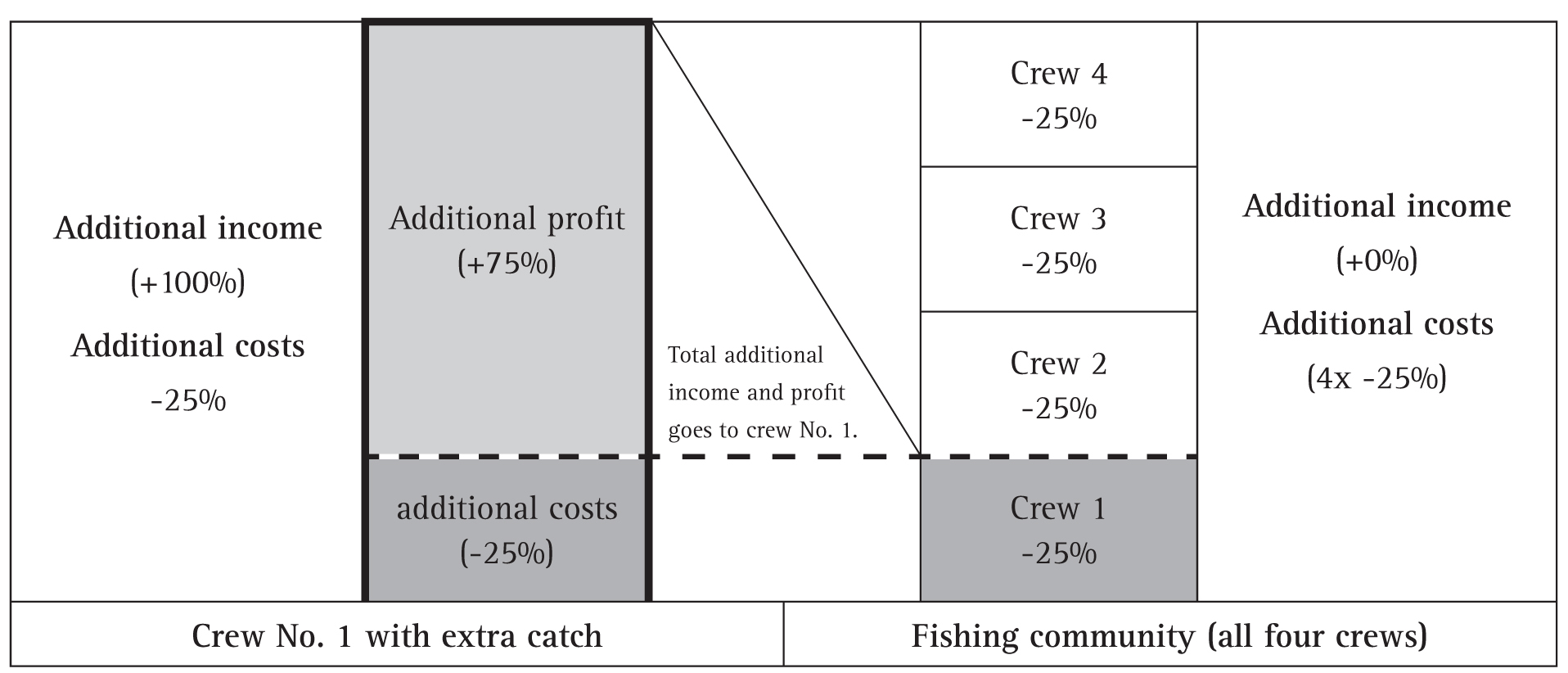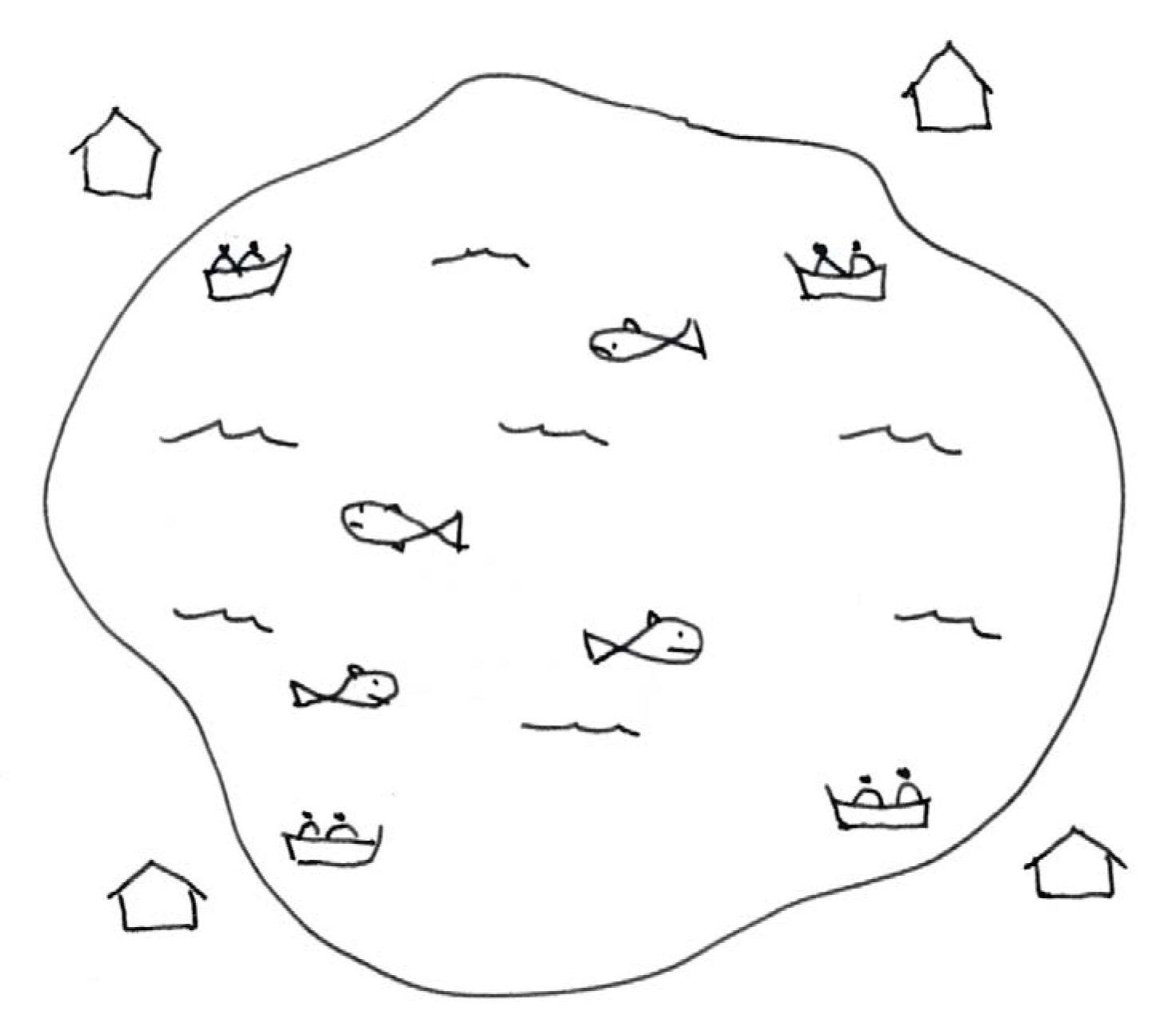Student handout 4.1: Case story: the conflict in the fishing community
Living Democracy » Textbooks » Taking part in democracy » Manual for students » Student handout 4.1: Case story: the conflict in the fishing communityI. The fishing community
Imagine a big lake full of fish. On the shores, fishermen live in four small villages – the fishing community. Each village sends out a crew to catch fish. In the close season, the fishermen allow the fish stocks to recover, while they repair their nets and their boats. They have nothing else to live on but fish. What they do not eat with their families they can sell at a market nearby. With this income, the fishermen feed, clothe and house themselves and their families. Their living standard is modest, but sufficient.
II. The conflict over resource mismanagement
In the past two or three years, serious conflict has broken out in the fishing community. Some fishing crews have attempted to increase their income by catching more fish. Now the reproduction figures have dropped, and the fish stocks have decreased by half in three years. The fishing community faces a whole series of problems:
- the depletion of the fish stocks, with the danger of total extinction;
- the decrease in the total output of fish;
- the gap between two rich and two poor fishing villages (“winners and losers”);
- the danger of violent conflict between the fishing villages.
This is a conflict over mismanagement of a common resource. It seems to be based on three things that reinforce each other:
- There is an incentive that encourages the fishermen to catch more fish;
- There is a total absence of rules, so the fishermen can do what they like;
- The crews of fishermen do not communicate with each other.
III. Analysing the conflict (the “diagnosis”)
1. The incentive to overharvest the fish stocks
Every fisherman knows that the community relies on the fish stocks, and it is therefore sensible to allow the fish stocks to fully recover.
On the other hand, each fisherman also knows that if his crew caught one more fish, the fish stocks probably would not suffer. It would make a difference to the crew’s income, while the costs – caring for the fish stocks – would be borne by the whole community. This unequal distribution of additional profits and additional costs works to the advantage of those fishermen who catch more fish. This is an incentive to fish extensively. From the individual fisherman’s point of view, it seems sensible to catch more fish.

One crew catches more fish: unequal distribution of additional income, additional costs and additional profit for the fishing community
All fishermen are aware of this incentive, and they are fully informed about the effects of what everyone does. The worst scenario is quite likely – they all do the same, and catch more fish. As a result, the fish stocks are overharvested and cannot recover fully any more. A vicious circle is set off, as the fishermen can only compensate for their loss of income by an even higher level of overharvesting.
2. The absence of rules
The fishermen act in this way because there are no rules whatever – no guidance, no security, no community goals, no sanctions. As things stand, every fisherman may do as he pleases, and whatever he catches, belongs to him.
Under these circumstances, the fishermen’s behaviour is not surprising – the effects on the community and the fish stocks, on the other hand, are disastrous.
3. The absence of communication
So far, the fishermen have not met and talked about their situation. They act as they think best, and react to the decisions made by the other crews.
4. The effect of resource mismanagement
The sustainability model helps to specify the damage done by the fishermen’s mismanagement, and may help to define an alternative policy model (see student handouts 4.2 and 4.4).
IV. Settling the conflict
The “diagnosis” of the conflict should be taken into account when choosing the “therapy”.


